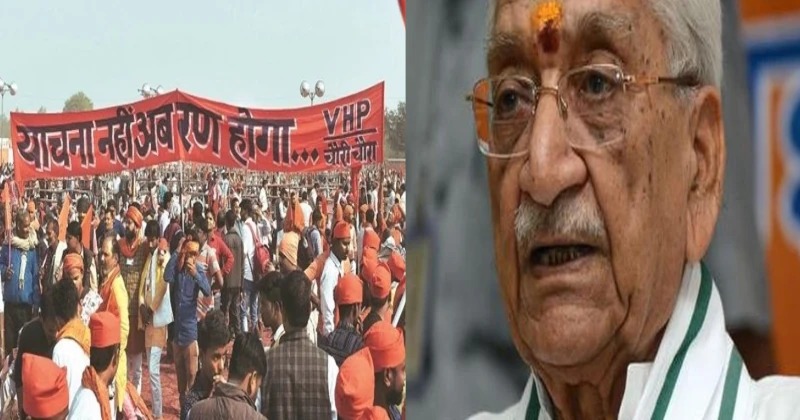
Born on September 27, 1926, in Agra, Ashok Singhal, the third among six brothers and a sister, was raised in a family deeply rooted in Indian values. His father, Mahavir Singh Singhal, served in the Indian Civil Service. Ashok Singhal pursued his education at Banaras Hindu Vishwavidyalaya (BHU), graduating as a metallurgical engineer in 1950. Even during his studies, he demonstrated his commitment to the cause of the nation and dharma by actively participating in the Rashtriya Swayamsevak Sangh (RSS) under the guidance of Balasaheb Deoras.
After completing his education, Ashok Singhal dedicated himself to the nation and Hindu Dharma, working as a full-time pracharak around Gorakhpur. His association with Raju Bhaiyya, a physics professor at Allahabad Vishwavidyalaya and later the head of RSS, strengthened during the tumultuous period of emergency when both were arrested. Ashok Singhal’s journey took a significant turn when he was appointed the Joint General Secretary of Vishwa Hindu Parishad (VHP) by Raju Bhaiyya, who later became the head of RSS. Four years later, Ashok Singhal assumed the position of General Secretary in VHP.
Under Ashok Singhal’s leadership, VHP underwent a transformative phase, evolving from an elite organisation focused on cultural activities to a mass-oriented entity at the forefront of Hindu revivalism. He bridged the gap between the sadhu samaj and the Bharatiya Janata Party (BJP), playing a crucial role in convincing the BJP leadership to include the Ram Janmabhoomi issue in their 1989 election manifesto. This marked the integration of the Ram Janmabhoomi Movement with national politics, with Ashok Singhal emerging as its chief architect.
One of Ashok Singhal’s notable contributions was his staunch advocacy against conversion, recognising its potential impact on the existence of Hindus in the future. The pivotal moment came in 1990 when Lal Krishna Advani led the Ram Janmabhoomi Rath Yatra and was subsequently arrested by Lalu Prasad Yadav, the Chief Minister of Bihar. Despite political turmoil and government restrictions, Ashok Singhal mobilised Hindu youth for Kar Seva, leading them in Ayodhya.
The tragic events of 1990 witnessed a crackdown on the Kar Sevaks by the police, resulting in the loss of thousands of lives as their bodies were callously thrown into the Saryu river. Undeterred, Ashok Singhal continued to lead the charge, facing lathi blows himself during the Kar Seva and bleeding for the cause.
In the historic Dharm Sansad of 1992, Ashok Singhal boldly declared that another Kar Seva would be carried out in Ayodhya. The culmination of the long-standing battle for Shri Ram Janmabhoomi occurred on December 6, 1992, when the Ram Janmabhoomi was conclusively won by Hindus. Jai Shri Ram!
Ashok Singhal’s life and legacy are indelibly woven into the fabric of the Ram Janmabhoomi Movement, an epic tale of devotion, resilience, and triumph against all odds. His tireless efforts and sacrifices have left an indelible mark on the collective consciousness of Hindus, reminding the world of the enduring spirit that defines the land of Bharat – a land of Shiv, Ram, and Krishna.
Leave a Comment